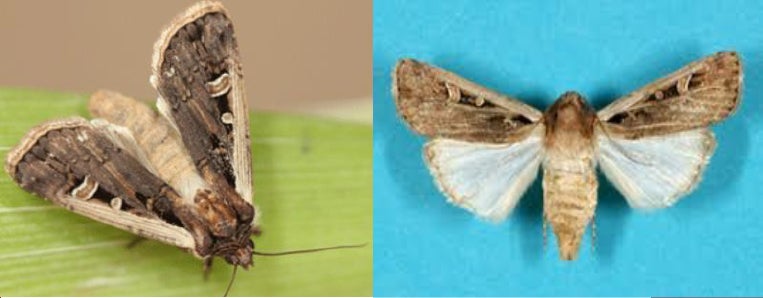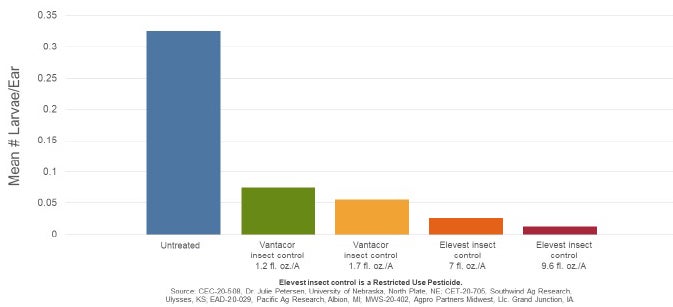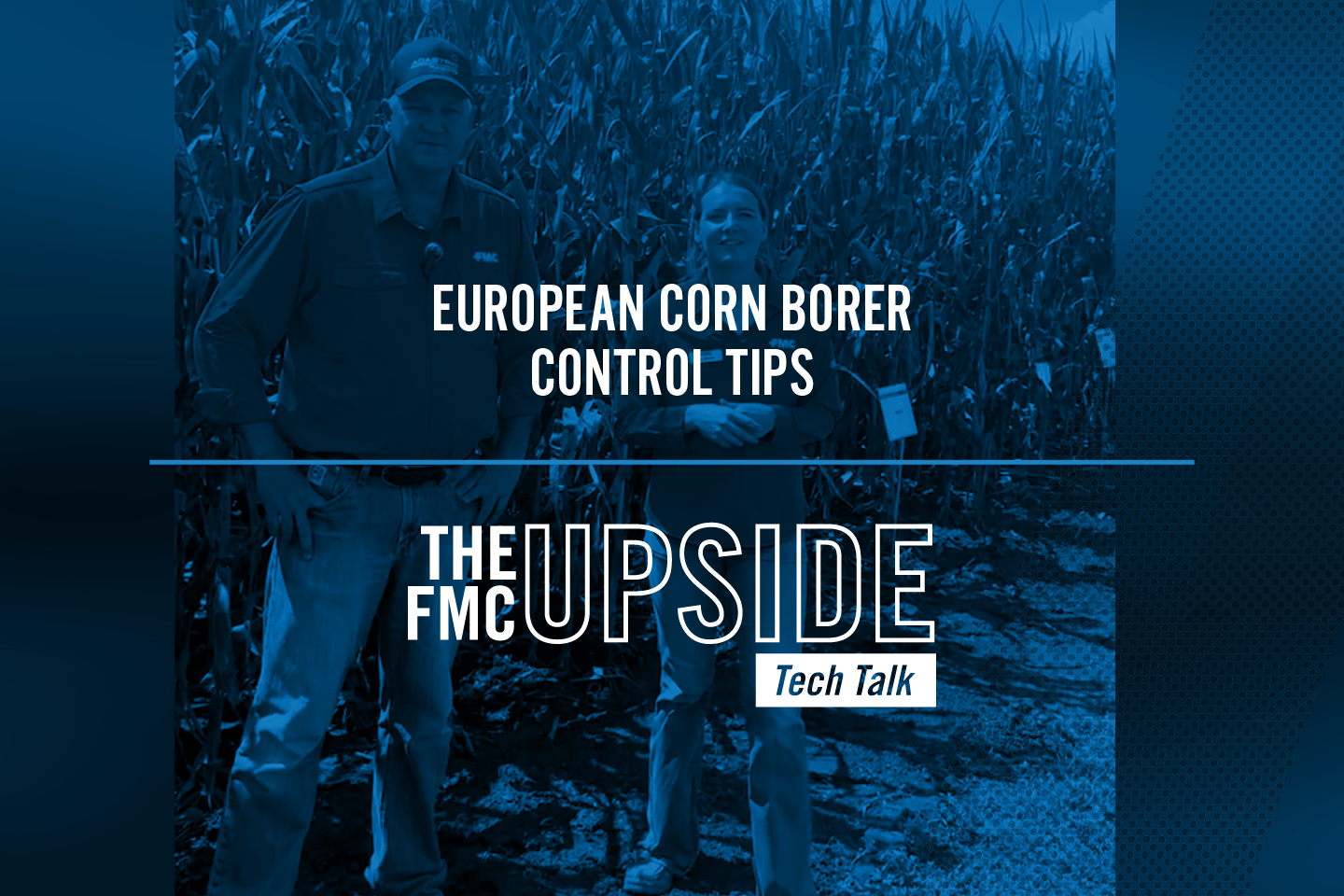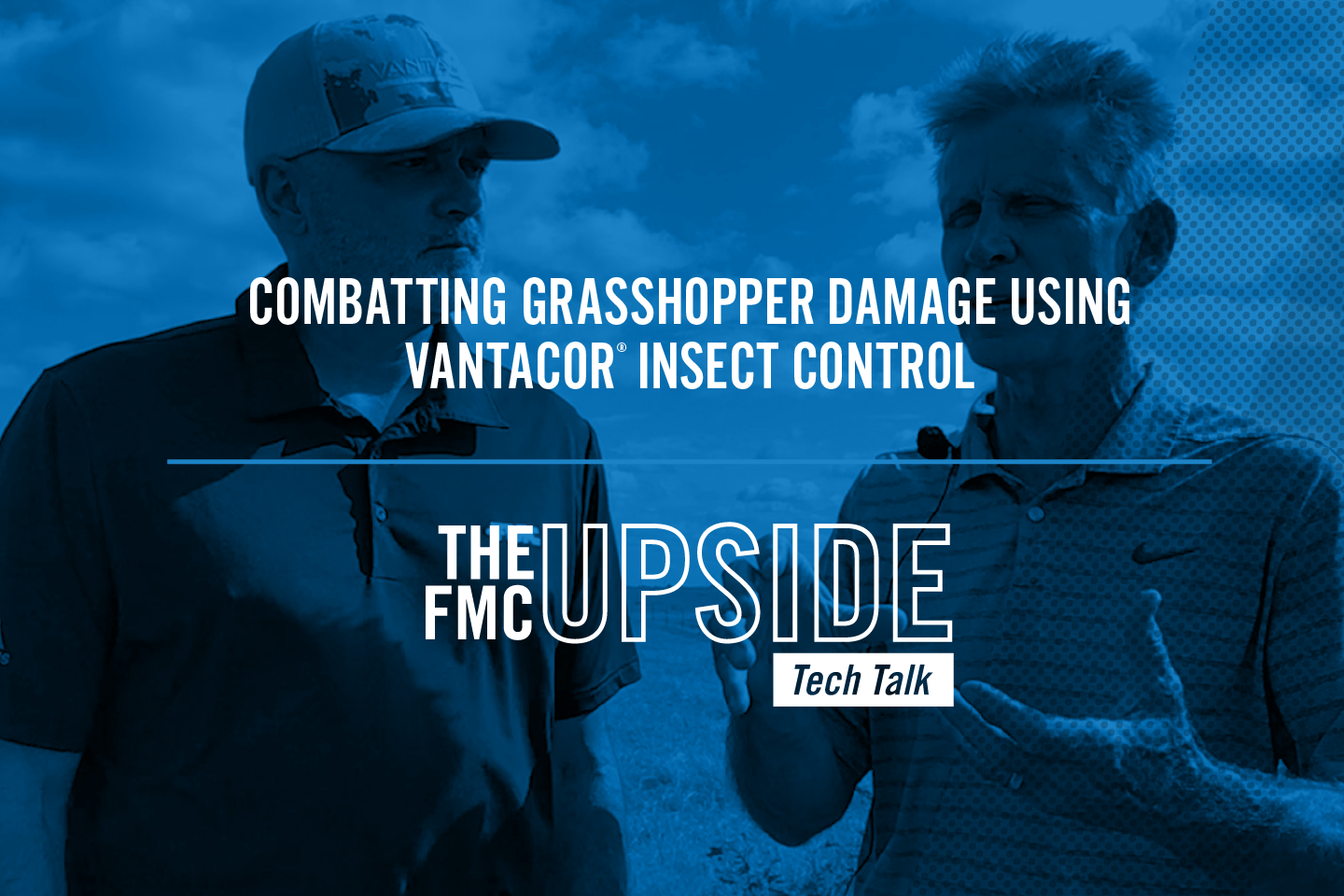The western bean cutworm (WBC) is a native North American pest that feeds mainly on corn. Historically the WBC covered the western Great Plains states but has rapidly expanded the last two decades eastward across the United States Corn Belt, causing significant economic damage to corn in most parts of this region.
WBC is not a true “cutworm” in that it feeds on the reproductive parts of the plants and not by cutting stems as many cutworms do. The WBC is a late-season pest and larval feeding coincides with ear development.
Importance and Damage
WBC damage is primarily attributed to kernel feeding that causes a reduction in yields and grain quality. Kernels with feeding damage are more susceptible to molds, which may increase levels of the mycotoxin deoxynivalenol (DON). Most WBC feeding is concentrated on the ear, and yield studies have shown that an average of one larva/plant may cause four bu/A yield loss.
Multiple larvae per ear is possible since they are not cannibalistic and several larvae per ear has shown grain yields to be reduced by 15-20%. WBC feeding may allow mold and other fungal spores to colonize the ear, further reducing grain quality and potentially producing mycotoxins.

Biology
Adults: One generation occurs each year for the WBC. Moths are primarily grayish-brown in color with a wing-span of approximately 1-1/2“ with a whitish stripe at the front of the forewing with two cream-colored, outlined shapes immediately behind. Moth emergence begins in early July and usually peaks during the middle of the month. Male moths can be monitored using pheromone traps. Female moths will mate and lay eggs during July and August. The late whorl stage are preferred by female moths who are seeking to lay eggs on corn that is near but not past pollination.

Eggs: Eggs are laid on the upper surfaces of leaves in masses of 20-200, often on leaves near the whorl that have not unfolded completely and are vertical in orientation. Eggs are white when first laid and become tan to purple as they begin to develop. As the larvae hatch from the eggs they will consume their eggshells, making post-hatch scouting for empty egg masses difficult. Larvae will then move into protected areas of the corn plant, feeding on leaf tissue, fallen anthers/pollen and silks on their way to the developing ear.

Larvae: There are six larval instars and they become more conspicuous and damaging as they grow. Larvae disperse from the plant where the eggs were deposited to infest neighboring plants, both within and across the row. If the tassel has emerged, the larvae can be found in leaf axils feeding on dropped anthers and pollen and will also feed on silks.
Major larval feeding coincides with ear development with mature larvae feeding on the ear tip and side of ears. Entry holes and/or frass are not always visible, so scouting for larvae must include removing the ear husks.

Treatment Recommendations
When determining if an insecticide application is warranted, evaluate the upper leaf surfaces of new leaves on several plants throughout the field. If the threshold has been met, it is important to apply prior to the larvae reaching protected parts of the plant, most notably the ear. Applications occurring at or near egg hatch have demonstrated the most effective control.
Vantacor® insect control powered by Rynaxypyr® active delivers the industry standard active ingredient for long residual control of WBC and other Lepidopteran pests. This highly concentrated formulation of Rynaxypyr active uses a low use rate to target WBC and other worm species, as well as grasshoppers, that can diminish yield profitability in corn.
Product Information
|
MOA |
Group 28 |
|---|---|
|
Formulation |
Suspension concentrate |
|
Loading |
5.0 lbs. active ingredient per gallon |
|
Signal Word |
None |
|
Package Size |
8 x 1 qt. – NEW |
|
REI |
4 hours |
|
Low Use Rates |
0.7 – 2.5 fl. oz./A; WBC 1.2 – 2.5 fl. oz./A |
|
Applications |
In-furrow, ground, air, overhead chemigation |
Vantacor Insect Control Research Trials
The chart below illustrates the efficacy of Vantacor insect control on western bean cutworm (Loxagrotis albicosta) in corn. Mean across four trials and multiple evaluations conducted in 2020 in Nebraska, Kansas, Iowa, and Michigan.

Key Benefits of Vantacor Insect Control for Western Bean Cutworm
- Long-lasting control, providing higher yields and better quality.
- Excellent crop protection – starts working right away by stopping WBC feeding and keeps working for up to 21 days.
- Low use rates: 1.2-2.5 fl. oz./A for WBC control.
- Can be applied by air, ground or chemigation and is rainfast once the spray has dried.
- Works through ingestion, contact and ovi-larvicidal properties, assuring a wide window of control.
- Does not flare mites and has low impact on beneficials.
Elevest insect control is a Restricted Use Pesticide. Always read and follow all label directions, precautions and restrictions for use. Some products may not be registered for sale or use in all states. Vantacor insect control may not be registered for sale or use in all states. Contact your local FMC retailer or representative for details and availability in your state. FMC, the FMC logo, Rynaxypyr , Vantacor and Elevest are trademarks of FMC Corporation or an affiliate. ©2022 FMC Corporation. All rights reserved. 06/22 (009_2022)



